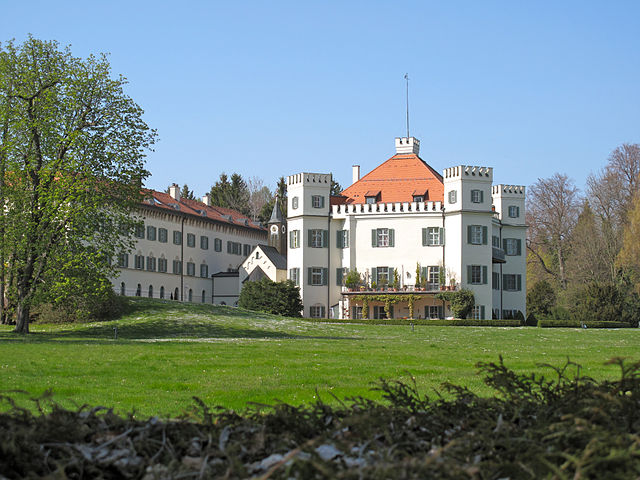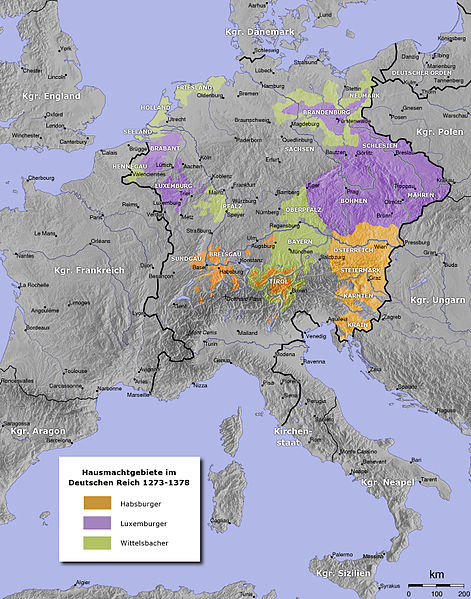Duke in Bavaria was a title used among others since 1506, when primogeniture was established, by all members of the House of Wittelsbach, with the exception of the Duke of Bavaria which began to be a unique position. So reads for instance the full title of the late 16th century's Charles I, Count Palatine of Zweibrücken-Birkenfeld and patriarch of the House of Palatinate-Birkenfeld: "Count Palatine by Rhine, Duke in Bavaria, Count to Veldenz and Sponheim". The title grew in importance as Wilhelm, Count Palatine of Zweibrücken-Birkenfeld-Gelnhausen began to use it, in the early 19th century, as his primary title – Duke Wilhelm in Bavaria. This choice has also had effect for his descendants.
Banz Abbey
Possenhofen Castle
Unterwittelsbach Castle
The house of Duke Maximilian Joseph in Munich
The House of Wittelsbach is a former Bavarian dynasty, with branches that have ruled over territories including the Electorate of Bavaria, the Electoral Palatinate, the Electorate of Cologne, Holland, Zeeland, Sweden, Denmark, Norway, Hungary, Bohemia, and Greece. Their ancestral lands of Bavaria and the Palatinate were prince-electorates, and the family had three of its members elected emperors and kings of the Holy Roman Empire. They ruled over the Kingdom of Bavaria which was created in 1805 and continued to exist until 1918.
The Wittelsbach dominions within the Holy Roman Empire (Bavaria, The Netherlands and Palatinate) 1373 are shown as Wittelsbach, among the houses of Luxembourg which acquired Brandenburg that year and Habsburg which had acquired Tyrol in 1369
Heidelberg Castle, the seat of the Electors of Palatinate until destroyed by the French in March 1689.
Nymphenburg Palace
The Kingdom of Greece in 1861.








